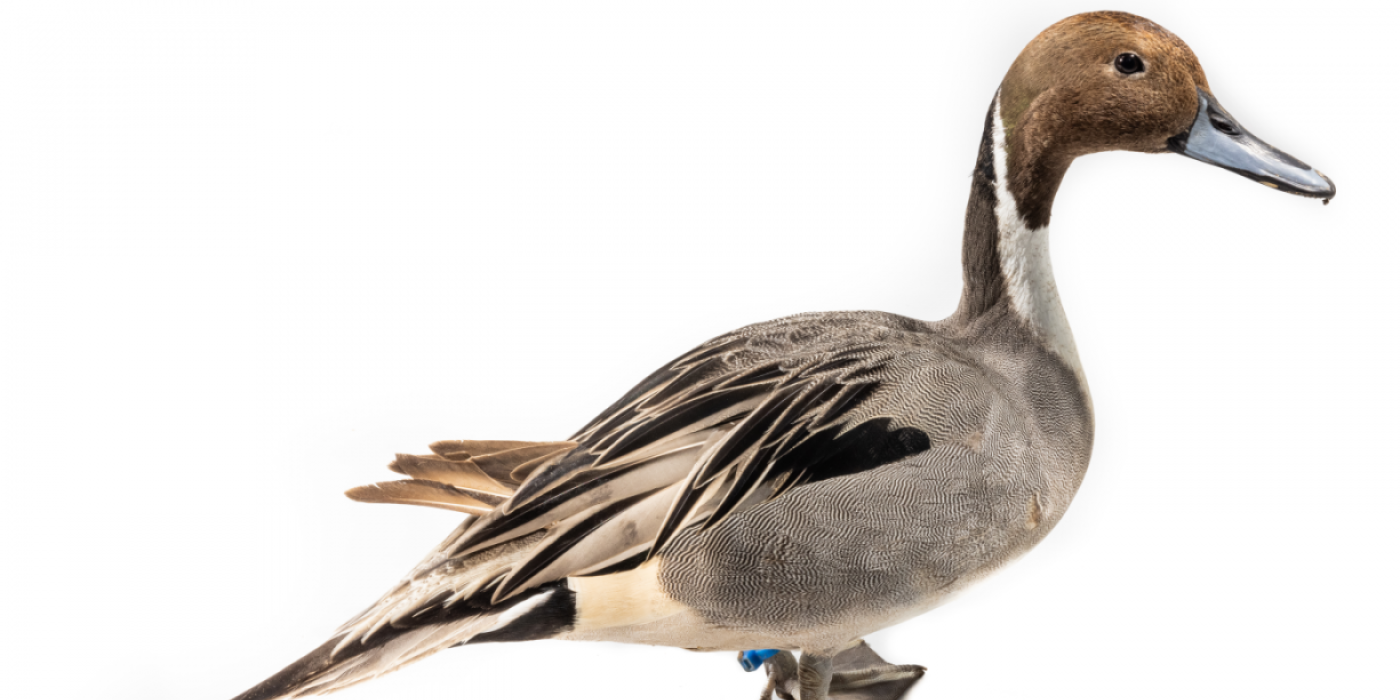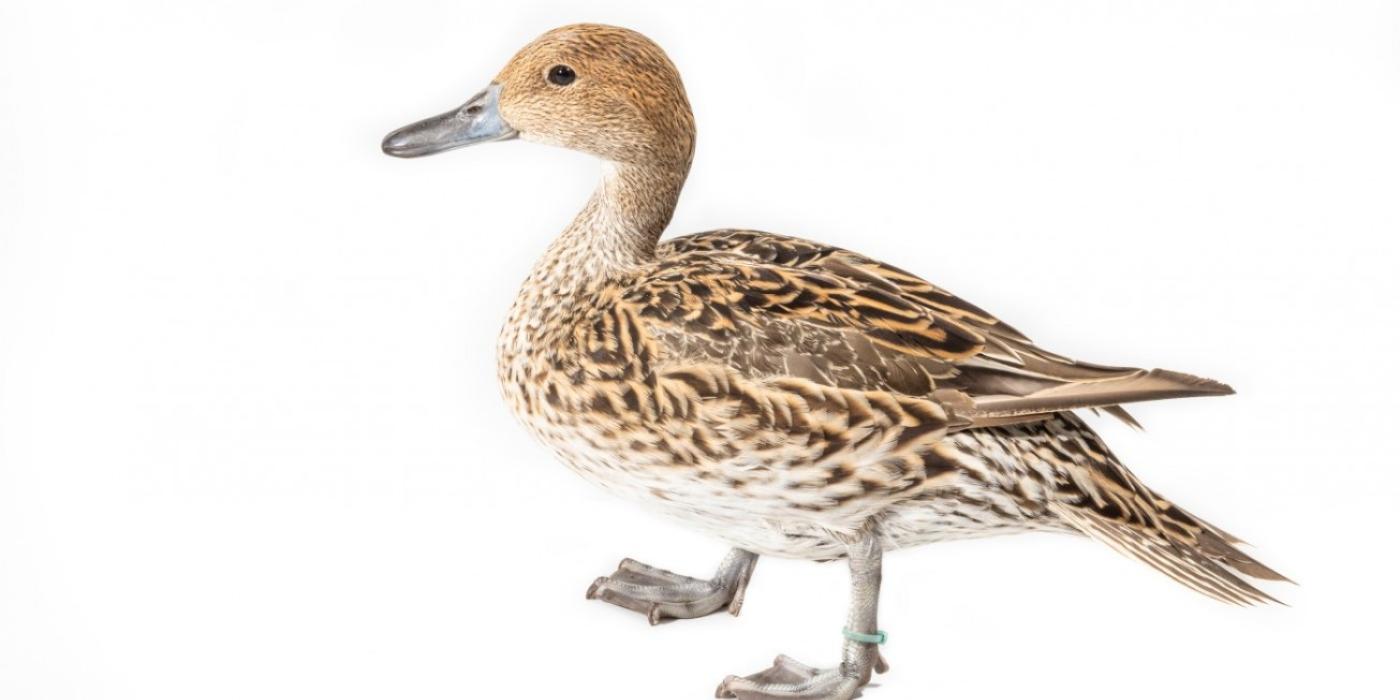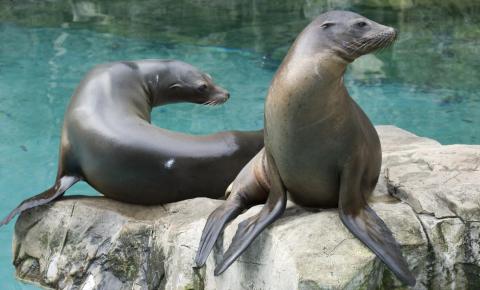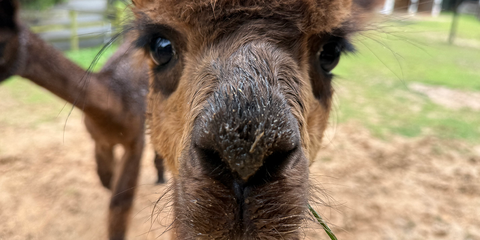Physical Description
Northern pintails are named for their long central tail feathers ending in what appears to be a point. The male is a buff-gray color with a chocolate-covered head, a wide white strip on his chest and black patterning on his back. Females and non-breeding males are mottled brown with a light chest and neck.
When these ducks fly, their inner wing feathers flash green on males and bronze on females. These colored secondary feathers are known as a speculum.
Size
These large ducks can reach over two feet (60 centimeters) long and weigh over 2 pounds (around one kilogram). Their wingspan spreads up to 3 feet (91 centimeters).
Native Habitat
Sometimes referred to as the northern nomads, northern pintails have extensive migratory routes. They have been found on every continent except Antarctica, but typically do not live or breed south of the equator.
A migratory bird, northern pintails arrive at their breeding grounds in the northernmost part of their range in April. In North America, these grounds span from Alaska through the Canadian Arctic to western Greenland and south into the central United States. Males begin their migration back south in May or early June. Females follow soon after. This migration, known as a molt migration, is extensive. About a month into their return migration, the ducks land in a molting area, typically gathering in large flocks separated by sex. Here they are flightless for about four weeks from July to August as they molt their breeding plumage and grow their wintering.
Then, in mid-August, the birds continue southwards to their wintering grounds. Some northern pintails who breed and nest in Siberia will migrate across the Bering Strait and winter in the U.S.
Northern pintails prefer habitats with low vegetation and shallow water. On its wintering grounds, northern pintails will also frequent large inland lakes, ponds, marshes and coastal lagoons.
Lifespan
Communication
These birds make short bursting noises that sound like a wheezy train whistle. During courtship, northern pintails vocalize with a “geeheee” sounding call, followed by a short whistle.
Food/Eating Habits
These ducks eat from the water’s surface or submerge their head to find food. They have also been known to forage on land. Their diet consists of aquatic plants, including algae, tubers, grasses and seeds. They will also eat small aquatic animals, including insects, mollusks, crustaceans, amphibians and fish during the summer. These birds typically feed in the evening or overnight.
Social Structure
During winter and migration, northern pintails group together in large flocks. They primarily nest as pairs but are sometimes seen in small, loose groups. Pairs begin forming on wintering grounds and continue through the birds' arrival on breeding grounds. Pursuit fights are common, as several males will often court a single female.
Reproduction and Development
Females choose a ground nest site among short vegetation. The spot is usually at least half a mile (1 kilometer) away from water. Females create a shallow depression in the ground and line it with grasses, leaves, twigs and down feathers. Once her nest is complete, a female northern pintail will lay an average of eight eggs and incubate them for 21 to 25 days.
Within a few hours of hatching, chicks follow their mother away from the nest and can forage for food by themselves. A female northern pintail will defend her chicks from predators by flying at them or leading them away as she pretends to be injured. These ducklings can fly when they are 38 to 50 days old. Northern pintails hatched in the far north develop faster because they can forage and eat at all hours due to the continuous daylight.
Conservation Efforts
Despite being listed by the IUCN as being at least concern of extinction, northern pintail numbers are on the decline. The North American subpopulation has decreased by over 75% from the 1960s through the early 2000s. The biggest threat to northern pintails worldwide is habitat loss. Both the prairie and wetland habitats they rely on are often cut down or repurposed, eliminating nesting space. Prairie habitats are especially susceptible to agricultural conversion. Climate change also impacts the quality of northern pintail habitats. For example, long-term droughts decrease the birds’ survival rates.
Pollution is another large threat to this species. Ducks who live or forage on farmlands are susceptible to eating deadly pesticides. Additionally, harmful agricultural chemicals often end up in the waterways these ducks frequent.
Lead poisoning from ingested hunting shot is another concern for North American ducks. Laws banning use of lead shot have significantly reduced exposure to lead since 1991 in the U.S. Northern pintails are globally hunted. As a game bird in North America, it does have some protections, as hunting limits are updated per species every year to help safeguard against population declines. Internationally, these ducks are hunted for sport and for their meat.
Help this Species
- Reduce, reuse and recycle — in that order! Cut back on single-use goods, and find creative ways to reuse products at the end of their life cycle. Choose recycling over trash when possible.
- Be a smart consumer. Choose products made with sustainable ingredients, such as Smithsonian certified Bird Friendly coffees, which support farmers striving to limit their impact on wildlife and habitat.
- Practice ecotourism by being an advocate for the environment when you’re on vacation. During your travels, support, visit or volunteer with organizations that protect wildlife. Shop smart too! Avoid buying products made from animals, which could support poaching and the illegal wildlife trade.
- Consider going meat-free one day each week to help reduce the demand on the livestock industry and decrease your carbon footprint!
- Support organizations like the Smithsonian’s National Zoo and Conservation Biology Institute that research better ways to protect and care for this animal and other endangered species. Consider donating your time, money or goods.
- Are you a hunter? You can be an incredible ally for conservation! Check the conservation status of the animals you hunt and use methods that don’t impact other animals.
- Conservation starts with you! Join a citizen science project, such as FrogWatch or Neighborhood Nestwatch, where you can help collect valuable data for scientists. Encourage your friends and family to get involved too.
- Protect local waterways by using fewer pesticides when caring for your garden or lawn. Using fertilizers sparingly, keeping storm drains free of litter and picking up after your pet can also improve watershed health.





